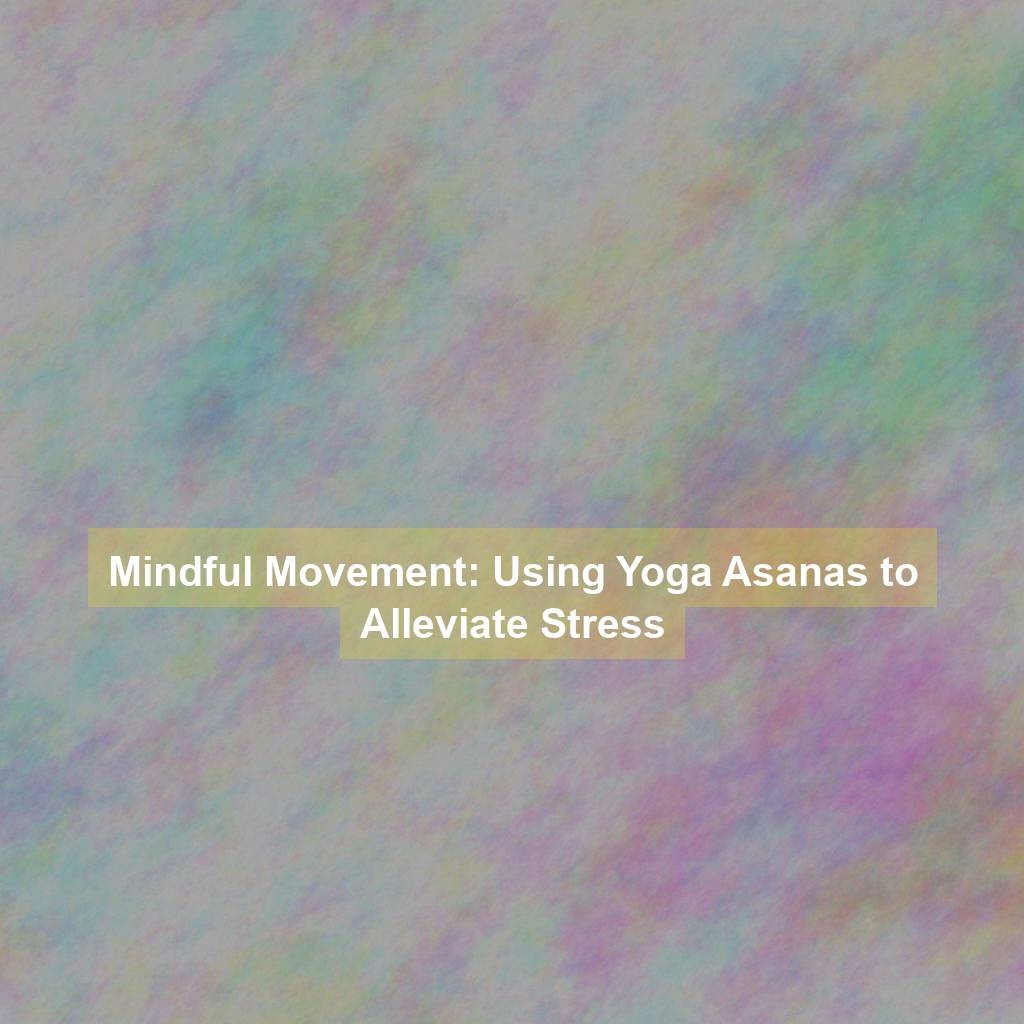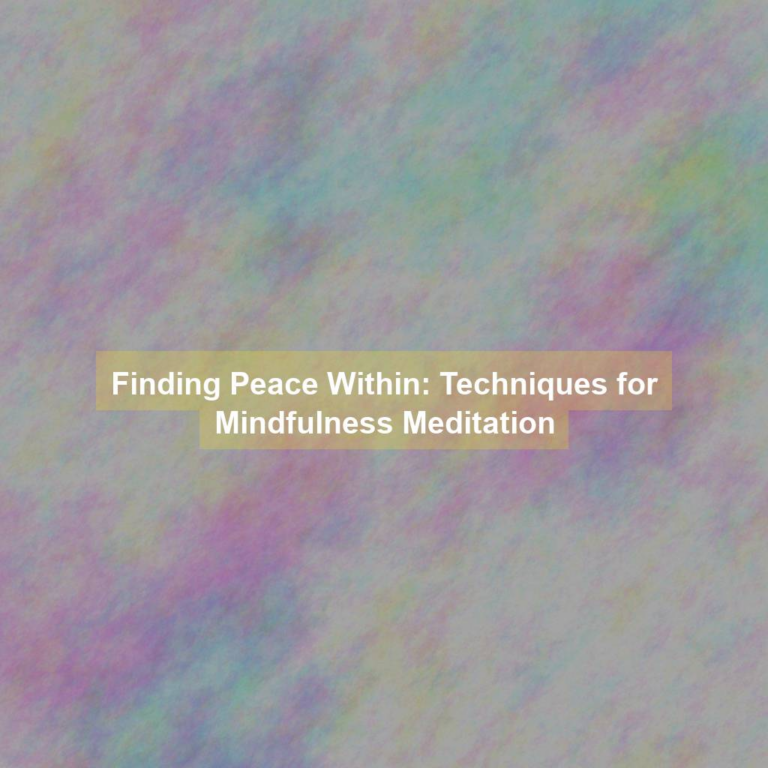Feeling overwhelmed by the demands of everyday life? You’re not alone. But what if there was a way to ease that burden, to find a sense of calm amidst the chaos?
Mindful movement, specifically through the practice of yoga asanas, offers a pathway to alleviate stress and cultivate a greater sense of inner peace. By incorporating these gentle yet powerful movements into your daily routine, you may discover a newfound ability to navigate life’s challenges with a greater sense of ease.
Curious to learn more about how yoga asanas can help you find relief from stress?
Understanding the Benefits of Yoga Asanas for Stress Relief
To understand the benefits of yoga asanas for stress relief, you need to recognize how they actively engage both the body and mind. These asanas, or poses, require focus and concentration, which helps to divert your attention away from stressors and into the present moment. The physical aspect of the practice involves stretching and strengthening the muscles, releasing tension and promoting relaxation. This physical release of tension can have a direct effect on your mental state, helping to calm the mind and reduce feelings of stress and anxiety.
Additionally, yoga asanas often incorporate deep, intentional breathing, which has been shown to activate the body’s relaxation response. When you breathe deeply and mindfully during yoga, it can help to lower your heart rate and blood pressure, signaling to your body that it’s time to relax. This combination of physical movement, deep breathing, and mental focus can effectively alleviate stress and promote a sense of overall well-being.
Exploring Key Yoga Asanas for Alleviating Stress
Let’s explore some key yoga asanas that effectively alleviate stress.
One of the most popular asanas for stress relief is the child’s pose (Balasana). This gentle stretch helps calm the mind and release tension in the back, shoulders, and chest.
Another beneficial asana is the standing forward bend (Uttanasana), which allows for a deep stretch in the hamstrings and back, promoting relaxation and reducing stress.
The corpse pose (Savasana) is also highly effective for stress relief, as it allows for complete relaxation of the body and mind.
The cat-cow pose (Marjaryasana-Bitilasana) is a gentle flow between two poses that helps to release tension in the spine and increase circulation, promoting a sense of calm.
Additionally, the legs-up-the-wall pose (Viparita Karani) is known for its ability to reduce anxiety and fatigue by promoting relaxation and improving circulation.
These key yoga asanas can be incorporated into a daily practice to help alleviate stress and promote overall well-being.
Incorporating Yoga Asanas Into Your Daily Routine
Consider integrating these yoga asanas into your daily routine to experience their stress-relieving benefits. Start your day with a few rounds of Sun Salutation to awaken your body and mind. This sequence of asanas stretches and strengthens your muscles while promoting deep breathing and mental focus. Throughout the day, take short breaks to practice simple asanas like Child’s Pose, Cat-Cow, or seated spinal twists to release tension and refresh your mind. Incorporating these gentle movements into your routine can help prevent stress from accumulating in your body.
In the evening, wind down with relaxing asanas such as Forward Fold, Legs-Up-the-Wall, and Corpse Pose to ease physical and mental fatigue. These poses encourage relaxation and prepare you for a restful night’s sleep. Consistency is key, so aim to practice these asanas at the same time each day to establish a calming routine. By integrating yoga into your daily life, you can cultivate a sense of balance and inner peace, making it easier to manage stress and its effects on your well-being.
Mindful Breathing Techniques to Enhance Asana Practice
Enhance your yoga asana practice by incorporating mindful breathing techniques, allowing you to deepen your connection to each posture and cultivate a greater sense of inner calm.
Mindful breathing is a fundamental aspect of yoga that can significantly enhance the benefits of each asana. By focusing on your breath, you can bring a heightened awareness to the present moment, promoting relaxation and reducing stress.
One effective technique is diaphragmatic breathing, where you focus on deep, slow breaths that expand your diaphragm. This type of breathing can help release tension in your body and create a sense of ease during challenging asanas.
Another technique is the ujjayi breath, often used in vinyasa yoga, which involves breathing in and out through the nose with a slight constriction in the throat, creating a soothing sound. This technique can help you stay present and focused as you move through different postures.
Incorporating these mindful breathing techniques into your asana practice won’t only enhance the physical benefits but also promote a deeper sense of mindfulness and relaxation.
Creating a Relaxing Yoga Asana Sequence for Stress Relief
To create a relaxing yoga asana sequence for stress relief, start by selecting gentle poses that promote deep relaxation and release tension in the body.
Begin with easy seated poses such as Sukhasana (Easy Pose) or Balasana (Child’s Pose) to center yourself and calm the mind.
Follow this with gentle backbends like Bhujangasana (Cobra Pose) or Setu Bandhasana (Bridge Pose) to open the chest and release built-up tension.
Incorporate forward folds such as Paschimottanasana (Seated Forward Bend) or Uttanasana (Standing Forward Bend) to soothe the nervous system and quiet the mind.
Include gentle twists like Ardha Matsyendrasana (Half Lord of the Fishes Pose) to release tension in the spine and stimulate digestion.
Complete the sequence with relaxing restorative poses like Savasana (Corpse Pose) or Supta Baddha Konasana (Reclining Bound Angle Pose) to fully relax the body and mind.
As you move through the sequence, focus on deep, mindful breathing to enhance the stress-relieving benefits of each pose.
This sequence will help you release physical and mental tension, leaving you feeling calm and rejuvenated.
Conclusion
Incorporate yoga asanas into your daily routine to alleviate stress and promote relaxation. By practicing mindful movement and incorporating breathing techniques, you can enhance the benefits of yoga asanas for stress relief.
Take the time to explore different yoga asanas and create a sequence that works best for you. With consistent practice, you can create a calming and rejuvenating practice that helps you manage stress and find peace in your daily life.







